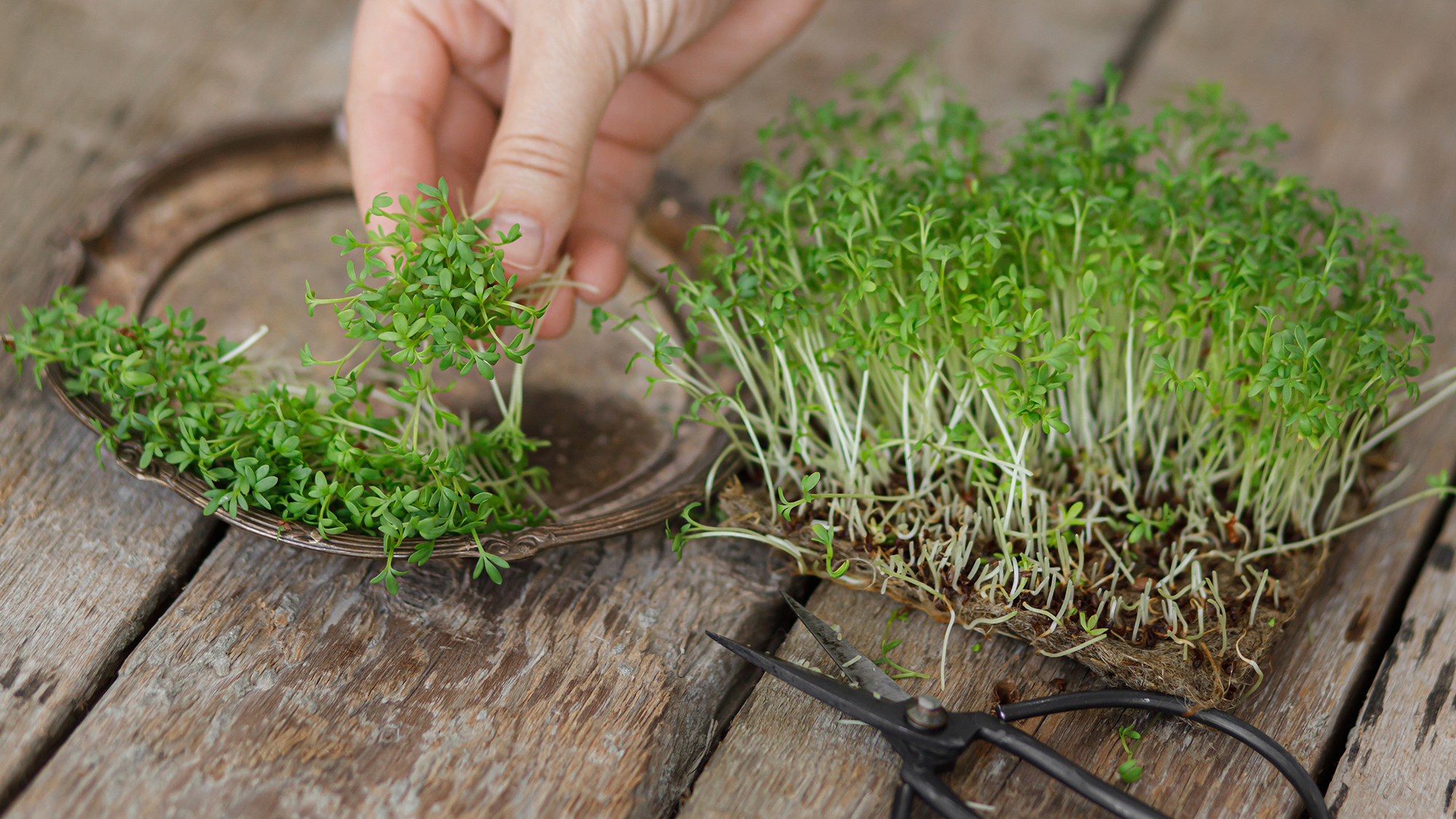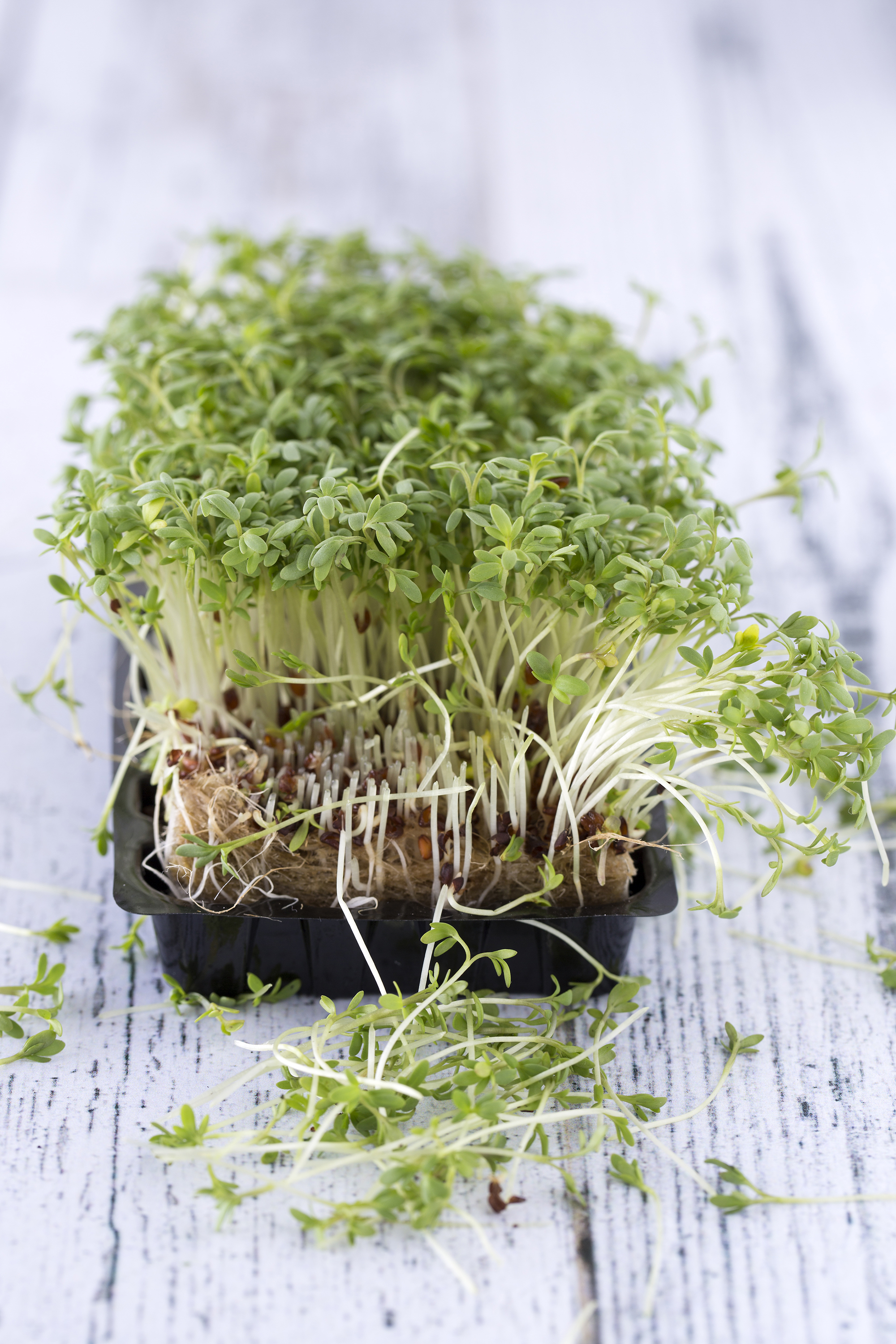How to grow cress – indoors or in the garden
Find out how to grow cress, the fastest growing crop that goes from seed to plate in less than a week


Learn how to grow cress, and you’ll have a constant supply of healthy, tasty greens to add to salads and sandwiches.
As it grows so quickly, cress is often considered an ideal crop for children, yet its punchy peppery flavor is more likely to be appreciated by adults. It is the perfect first crop for beginners to add to their kitchen garden ideas, and will sow the seeds of excitement for home growing.
Cress is packed with nutrients, in particular Vitamins A, C and K, which will be perfectly preserved when you cut it fresh.
It is also highly space efficient, so even the smallest of homes can accommodate a tray of cress. ‘It’s the perfect size to grow on the windowsill,’ says Rob Smith, product development manager at Thompson & Morgan.
‘The trick is little and often – sowing a 4x4 inch (10x10cm) patch every couple of weeks will keep you in fresh, home-grown cress all season – perfect for salads and sandwiches.’
Once you have caught the growing bug, learn how to grow microgreens for a diverse supply of quick and easy superfoods.
How to grow cress indoors
- Firstly, choose a suitable container to grow your cress in. ‘You could use a plastic container with damp paper towel, or even use an old cup filled with moist cotton wool,’ says Smith. Bear in mind, cress usually grows better in soil, so consider filling your tray with a light layer of compost. Alternatively, you can use a growing mat or felt.
- ‘Sprinkle cress seeds over the surface of the pot,’ says Chris Bonnett, owner of Gardening Express. Don’t be tempted to sow the seeds too densely, or the seedlings will be competing for space – keep to a light sprinkle.
- It’s important that the growing medium doesn’t dry out, so to keep the moisture in cover the pot with a lid or plastic wrap. If it does need watering, use a spray.
- Place your cress on a bright, warm windowsill.
- Cress seeds tend to germinate in around 24 hours, and the seedlings will soon be ready to eat. ‘You will be harvesting in a matter of 5-7 days,’ says Bonnett.
- To harvest cress, simply wait until the cress is at least 1 inch (2.5cm) tall, and snip it off with scissors.

How to grow cress in soil
If you would prefer larger, more mature plants, you will need to learn how to grow cress in soil. You can sow the seeds in the ground, or include them in your vegetable garden container ideas.
- Prepare your soil by raking it to a fine tilth.
- ‘Sow cress seeds in the ground in a block or row, close together,’ says Bonnett.
- Lightly cover the seeds with soil, and water well. Do not allow the soil to dry out. When watering cress, take care not to drown the seedlings or allow them to become matted down in the soil – ideally use a water spray or watering can with a fine rose.
- Once the seedlings have reached 1 inch (2.5cm) tall, thin them out to give them room to grow.
- Harvest outdoor cress with scissors once the plants have reached 5-6 inches (12-15cm).
Types of cress
There are several types of cress you can grow, so experiment with different seeds and see which flavor you like best.
Common plain or curled cress grow very well indoors, as does mustard cress.
‘If you want to try a different type of cress, have a go at learning how to grow cress outside,’ says Smith. ‘Watercress, American land cress (which is like watercress, but easier to grow in a veg patch), or Greek cress can be grown outside in pots or in the open and are great added to salads.’
Does cress regrow once cut?
Usually when harvesting cress, you cut them close to the soil line. But if you leave half an inch on the seedlings when you cut them, then you may find that the cress regrows.
If growing cress on a paper towel, however, it will have no soil to draw nutrients from, so you will have better success starting afresh.
If you have the space, there is nothing to be lost by experimenting. If all fails, then it will only take a few days to grow a fresh new crop.
Where does cress grow best?
Cress grows best in moist soil. It requires plenty of sunlight for the seeds to germinate, so when growing indoors position it on a sunny windowsill.
However, when growing outdoors, cress can struggle in high temperatures. ‘When cress becomes too hot and dry, it is prone to bolting,’ says Bonnett. You may find cress is a good crop to grow in a shadier area of the garden.
Sign up to the Homes & Gardens newsletter
Design expertise in your inbox – from inspiring decorating ideas and beautiful celebrity homes to practical gardening advice and shopping round-ups.

Melanie has worked in homes and gardens media for two decades. Having previously served as Editor on Period Living magazine, and worked on Homes & Gardens, Gardening Etc, Real Homes, and Homebuilding & Renovating, she is now focusing on her passion for gardening as a Senior Editor at Gardening Know How. As a keen home grower, Melanie has experimented with pretty much every type of vegetable at some point – with mixed results. Often it is the simplest things that elude you, which may explain why she just can't seem to master zucchinis.
-
 Diane Keaton uses glass cabinets to cleverly introduce color to her white kitchen – it's one of the most inventive decorating techniques I've ever seen
Diane Keaton uses glass cabinets to cleverly introduce color to her white kitchen – it's one of the most inventive decorating techniques I've ever seenThe actress intelligently uses rainbow-colored accessories for a Mexican-inspired twist on her classic Californian kitchen – I'm following suit in my tiny home
By Megan Slack
-
 'It's like my brain gets decluttered, too' – why 'Norwegian life-cleaning' can revolutionize how you tidy and future-proof your home at any age
'It's like my brain gets decluttered, too' – why 'Norwegian life-cleaning' can revolutionize how you tidy and future-proof your home at any ageDon't leave sorting your belongings to someone else, experts urge
By Ottilie Blackhall